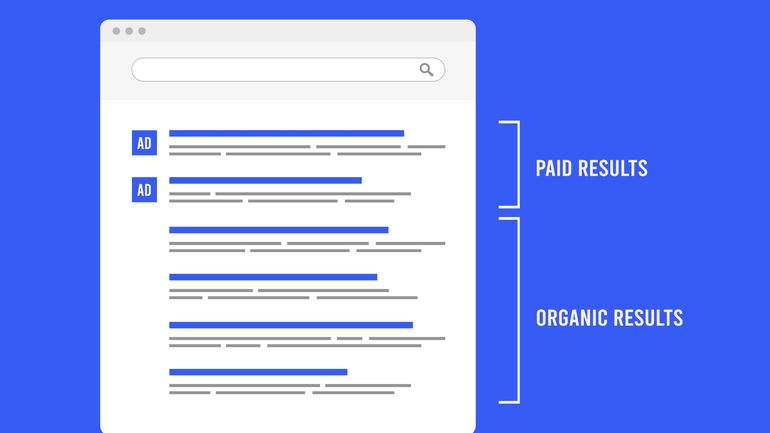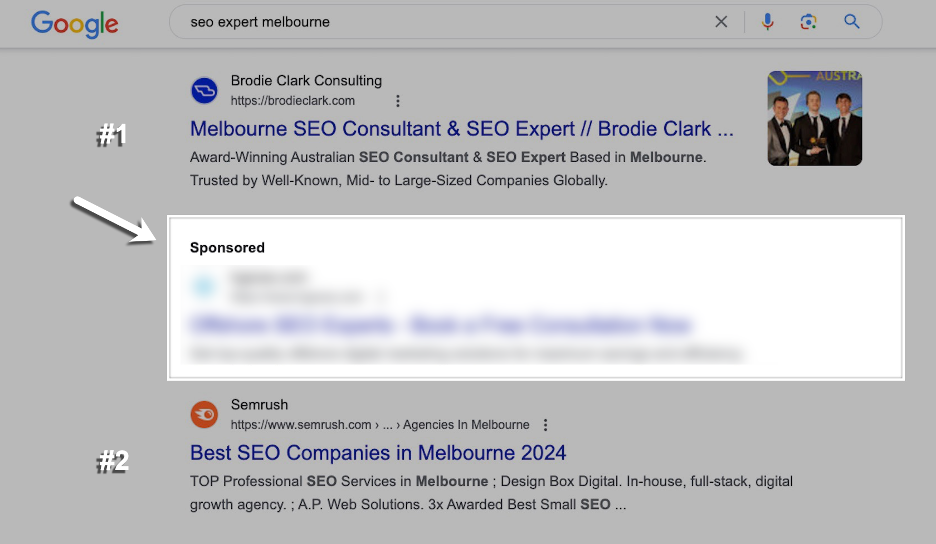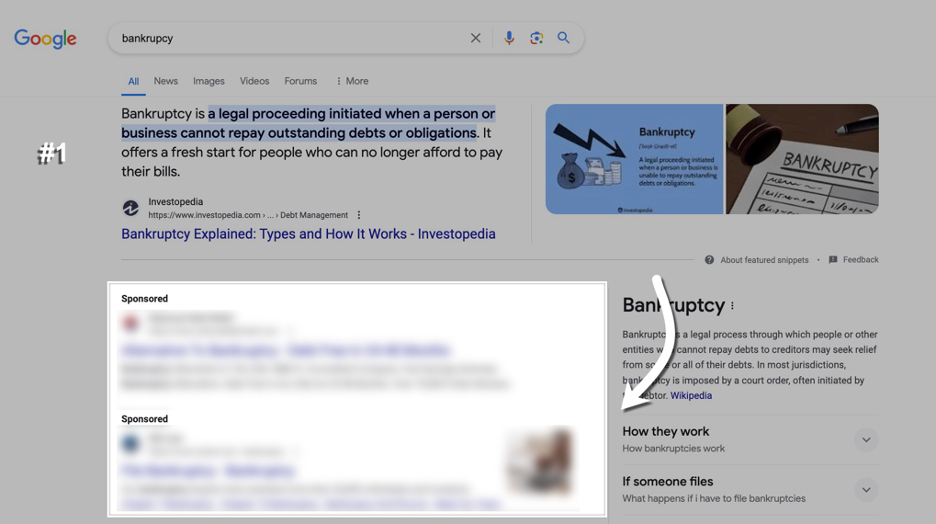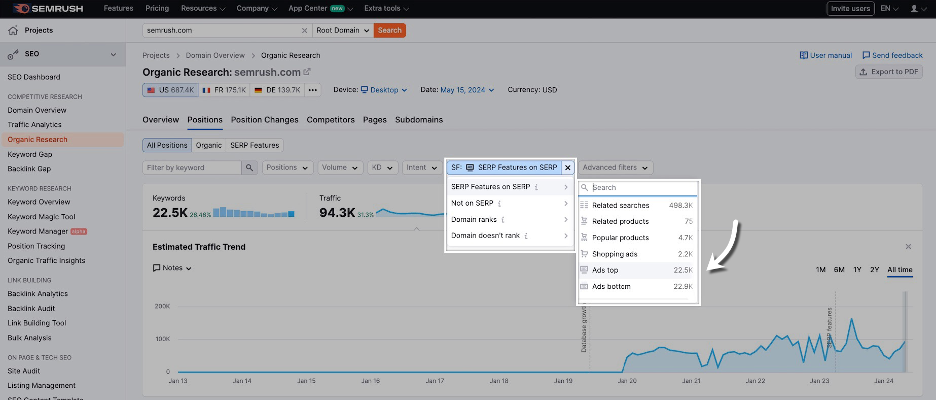
Google Integrates Ads Seamlessly into Organic Search Results

For nearly a year, Google has been seamlessly blending ads with organic search results, a practice that has now been officially acknowledged through a recent documentation update. Learn more about how Google is integrating ads into search results.
Google wants users to click on its sponsored ads, but not at the expense of user experience. However, in recent years, Google's actions have harmed users instead of helping them.
Search engine users have been used to seeing ads at the top or bottom of search results pages, with organic results in between or on their own. Sometimes search features are also included. But now, things have changed.
A change was recently added to Google’s documentation, stating that:
“Top ads may show below the top organic results on certain queries.”
Detailing how placement for top ads is dynamic and may change.
In this article, we explore this change and its impact on users and organic search results.
Timeline Of Changes
Leading up to the change, Google had been testing mixing sponsored ads within organic listings in various capacities over a 10-month period.
Here is a timeline of the changes leading up to the official launch.
June 17th, 2023: Initial Testing
Heavier Testing
On October 23rd, 2023, the testing of the new feature became more extensive. This time, the test was not only limited to mobile devices but was also visible on desktop searches. The inclusion of the test in search results became more prominent, making it easier for users to distinguish it from organic listings.
During this testing period, the broader SEO community began to take notice of the ad labels showing up in organic listings on both mobile and desktop devices. This testing phase lasted longer as the launch date approached.
March 28th, 2024: Launch
Google's Ads Liaison declared on this day that a permanent change was coming, with a fresh definition included in the "top ads" documentation. Users were informed to anticipate an official transition where ads would now be blended in with organic search results, moving beyond the previous limited testing phase.
Understanding The Different Types Of Placements
Now that Google has been integrating sponsored ads with organic results for nearly two months, we are getting a clearer picture of the changes and how the sponsored ads are being displayed.
Based on my research, there are two common situations where Google is presenting ads within organic listings.
Mixed With Organic Results
In the standard approach, a basic ad is placed among the top organic search results.
In my experience, it is typical to see one or two ads grouped together in this scenario. It is uncommon to come across a sequence of four ads in a row.
An example of this can be found below:
Screenshot from search for seo expert melbourne
In this screenshot taken from a Google search for "seo expert Melbourne" in May 2024, the sponsored ad is technically in position #2 on the page. Usually, ads appear above the main search results, but in this case, it is shown below.
For the Semrush page, its visibility on the Search Engine Results Page (SERP) would remain the same even if it was displayed above. However, for my page, being positioned below the ad gives it an advantage in terms of ranking visibility.
Directly Below Featured Snippets
What seems to be the most common way ads are mixed in with organic listings is by placing them directly below a featured snippet.
In cases like this, it is common for there to be a full lot of four ads that appear below the featured snippet. In this example, there are two ads that are appearing.
2 sponsored ads appearing in the SERPs
In the past, and even now, ads are usually shown right above the featured snippet on Google search results. This may not always provide the best user experience, as featured snippets are meant to display a concise answer to a query.
What Are Google’s Intentions?
Each of the situations explained in the previous section could be interpreted differently.
Google's intention in the first situation, where ads are mixed within organic results, is pretty clear. They aim to increase clicks on ads and make users less sensitive to ads appearing at the top, causing users to confuse ads for organic listings.
On the other hand, the second situation involving featured snippets may be seen differently. Despite ads still being visible on desktop, the user's query is prominently answered at the top of search results without ads obstructing the view.
I think this change by Google to make organic listings more visible is actually a good thing for users and SEO.
I understand that Google needs to focus on ad revenue by changing ad placement. There are valid arguments from both perspectives on this change, but I believe the impact is quite neutral for both parties.
Ads mixed in with organic results are still exceptionally rare, but featured snippet placements are a more common use case, and there are some clear upsides to this.
How To Analyze With Semrush
analyze ads top feature
Screenshot from Semrush, May 2024
I discovered that although Semrush has an Advertising Research tool to display your ad positions on different searches, the data collected doesn't make it easy to compare ad positions with organic listings.
Instead, I found a better method for analysis is to use the "Ads top" SERP feature filter in Organic Research. This helps identify when ads are blended with organic listings.
Here is where you can find this filter:
This filter does not let you filter by URLs for a particular domain. Instead, it shows you when "top ads" appear as a SERP feature in the Semrush index.
I have been able to analyze the top ad placements from the launch in March and found that ads mixed with organic results are still very uncommon.
Final Thoughts
Overall, I'm not too worried about Google's ad placement change. The change is official, according to Google's updated documentation. However, it seems more like a test as ads are still appearing in their usual spots in most cases.
I think the change should not have a big impact on Google users and SEO. If you notice ads blending in with regular search results, just be cautious.
I will be monitoring this change closely to ensure that Google doesn't go overboard with their ad placements.
Google is now using the "ad" label instead of "sponsored" on mobile for their ad testing, a change from previous years. These tests are likely to continue in the future, keeping our industry always exciting and dynamic.
More resources:
2 New SERP Features That Are Bad News For Publishers
How Search Engines Work
PPC Trends 2024
Featured Image: BestForBest/Shutterstock
Editor's P/S:
Google's recent decision to blend sponsored ads with organic search results has sparked mixed reactions. While Google claims it aims to improve user experience, many SEO professionals are concerned about the potential for confusion and reduced organic visibility.
The article provides a detailed analysis of the changes, including the different types of placements and Google's intentions. It also discusses the potential impact on users and SEO, and suggests that the change may not be as significant as initially feared. However, it emphasizes the need for caution and continued monitoring to ensure that Google does not prioritize ad revenue over user experience.
















